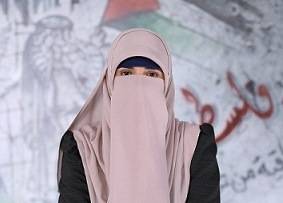Producing charcoal in the Gaza Strip is considered one of the most dangerous and demanding professions. There are only a handful of factories that operate in this field in spite of the long-standing practice of charcoal production as a result of the surplus citrus and olive wood.
However, as with most industries in the enclave, the 14-year-long siege had decimated production, while the occupation’s constant practices of razing Palestinian agricultural lands have caused the supply of wood to decline.
Taha Al-Hattab is the owner of one of the largest charcoal production factories in Gaza, which produces more than 80 tonnes of coal a year. He told MEMO that charcoal requires several production stages. The first sees large quantities of citrus wood placed in a large hole in the ground. The wood is arranged so air cannot enter. The pit is then filled with sand and straw and burnt for several days. After about six days, natural coal is formed.
The reduction in the availability of the timber needed for this process has, however, prompted some to explore avenues to produce coal through agricultural waste instead of wood. These efforts have succeeded in producing something referred to as biochar, which matches the specifications of natural charcoal. This is used to fertilise agricultural land and control pests. Efforts are continuing to create quality charcoal.
Traditional ovens help Gazans overcome unemployment and fuel shortage
Al-Hajj Abu Radi says the regular power cuts in the besieged enclave mean families are forced to search for alternative sources to heat their homes and not rely on electricity. Sitting around his fireplace, he says he and his family often gathered around this natural source of heat to talk, reminiscing about memories they shared and recounting stories from their day.
For mother of four, Umm Muhammed, the coal fire provides her a source of heat on which she can cook for her family. With a husband who is too sick to work, Umm Muhammed’s family lives on a limited income and cannot afford to buy gas canisters to connect to the cooker. For the family, coal fires are both a source of heat and nourishment.
Umm Muhammed is aware that there are long-term health risks to using coal but says she has no alternative. Her husband told MEMO: “I’m very sad for my wife spending continuous hours in front of the fire for us.”
In light of the increasing unemployment in the Gaza Strip, those who rely on the coal industry to provide them a regular salary have tried to develop the industry and expands it. Their biggest concern remains the misuse of coal in homes where there is no ventilation. This problem becomes more prevalent in winter when people close their doors and windows to keep the heat from escaping.
Some call coal black gold. Abdullah, a local coal merchant, says this term was used for imported coal. Often it is Egyptian coal that competes with the locally-made Gazan variety, but it is not readily available due to sporadic closures of border crossings as a result of the siege. Coal price, trader Abdullah tells us, is determined by the quality of wood used in its manufacture.
But demand for this valuable wood comes from other traditional forms of heating and cooking: wood fire stoves and fireplaces. Traditional clay oven, preferred by elderly residents of the Strip, depend on wood and because the flavour of the food is enriched by the woods used, it is important that quality produce is sought.
Both coal and firewood provide Palestinians in Gaza a means to overcome the regular power outages and cope through winter, meaning the damage they cause to users’ lungs and the environment are often overlooked in favour of the immediate benefits they provide.
After high winds, Gaza sees rise in sardines
The views expressed in this article belong to the author and do not necessarily reflect the editorial policy of Middle East Monitor.


![Palestinians work at al-Hattab charcoal production facility, east of Gaza City, on January 28, 2021 [MOHAMMED ABED/AFP via Getty Images]](https://i0.wp.com/www.middleeastmonitor.com/wp-content/uploads/2022/01/GettyImages-1230849804-scaled-e1643631975685.jpeg?fit=1200%2C800&ssl=1)









